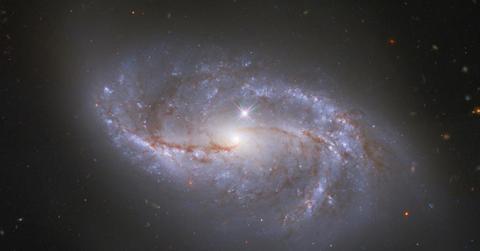Did Hubble Telescope Reach Its Goal? A Look Into What Was Once a NASA Failure
Updated June 20 2020, 6:10 p.m. ET

Hubble is the first major optical telescope to be placed in space, and it gave scientists a chance to study the universe in a never-before-seen light. The idea came into formation when NASA scientists realized they would be able to have unobstructed views of space without the distortion of the atmosphere — above light pollution and clouds.
The only way to do this, was to launch the telescope into space and hope for the best. The goal was to collect images of space to study the universe and how it was created and how it has evolved.
The team came across many challenges — one of the first big hurdles was figuring out a way to stabilize the telescope when it was in orbit, so that the machine is able to take steady photos of the universe without blurriness. Hubble orbits around Earth at about 17,000 miles per hour.
The team’s solution was to utilize the model of a gyroscope — which meant spinning the telescope on one axis, similar to a top, so that it remains steady while hurtling across space. They used six of the most finely balanced gyroscopes, each with a wheel spinning 320 times per second. The smallest imperfection on the gyroscope would lead to blurry images, so getting this part right was imperative.

NGC 6302: The "Butterfly Nebula"
According to NASA, “In order to take images of distant, faint objects, Hubble must be extremely steady and accurate. The telescope is able to lock onto a target without deviating more than 7/1000th of an arcsecond, or about the width of a human hair seen at a distance of 1 mile.”
On April 24, 1990, Space Shuttle Discovery made lift off, with the Hubble space telescope in tow, marking the biggest astronomy development since the Moon landing. All of the team’s effort to ensure a properly balanced telescope worked, and Hubble successfully orbited Earth. The only problem was, the images that came back down to Earth two months later were fuzzy.
After many attempts to try and focus the images, reality struck. Hubble was accidentally launched with a spherically aberrated mirror, meaning the mirror used in the telescope contained a tiny defect that stops the mirror from focusing all the incident light from the same location on an object to a precise point. The images of objects seen in these spherical mirrors are often blurry.

Westerlund 2
Did Hubble telescope reach its goal?
Since the goal of the telescope was to capture images of the universe, this was considered a huge fail for NASA, and many publications around the world mocked them for attempting something that was too difficult for them to get right. The Hubble team refused to give up, and after months of research and testing, they came up with a way to correct the mirror using its own version of “eyeglasses,” a machine now known as Corrective Optics Space Telescope Axial Replacement (COSTAR.)
COSTAR contained five mirrors on motorized arms that corrected the light entering Hubble. Since Hubble was already in space, NASA decided to send a team up to fix the telescope, rather than bringing Hubble back down and re-launching. Kathryn Thornton, an American scientist and at the time, NASA astronaut, was chosen for the space walk to repair the telescope.
She has described the experience in excruciating detail, emphasizing how high the stakes were for her to not mess up. Luckily, with steady hands and patience, she was able to install COSTAR and get Hubble back up and running.

Crab Nebula
Eleven days after Kathryn installed COSTAR, the calibrations were complete, and NASA anxiously awaited the images to see if their problem had been solved. On Dec. 18, 1993, scientists gathered around computer screens and saw the first clear images taken by Hubble. The mission was a success, and to this day, scientists have used countless images from the telescope to study the process of the universe.